Tooth Extractions Idaho Falls
Gentle Tooth Removal to Benefit Your Smile
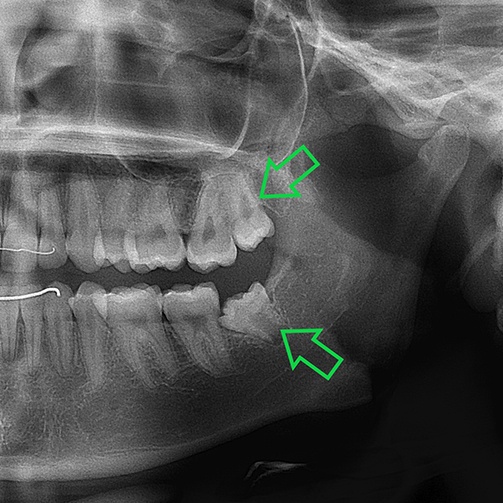
Ideally, we’d all love to hold on to all of our teeth and have them be bright, white, and healthy. On occasion, however, it’s necessary to have a tooth extracted by a professional to maintain your overall oral health. Dr. Brent Cline will take every precaution and measure to avoid a tooth extraction for the sake of just removing a tooth, but there are certain circumstances in which tooth extractions in Idaho Falls are the best options.
Why Choose Cline Family & Cosmetic Dentistry for Tooth Extractions?
- Sedation Offered for Anxious Patients
- Same-Day Emergency Appointments Available
-
Compassionate, Kind
Dental Team
When Does a Tooth Need to Be Extracted?
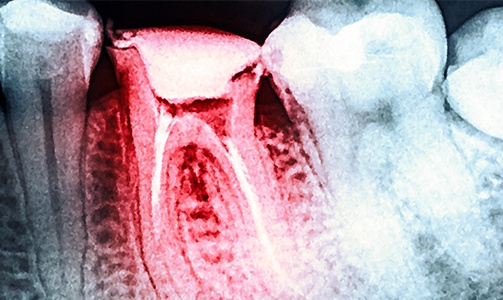
It goes without saying that you should consult with a professional dentist before having a tooth extracted. However, there are a few telltale signs that it’s time for a tooth to go. If a tooth is impacted or your mouth is overcrowded, you may need to have one or more teeth removed. If your teeth are pushing each other around in your mouth, that’s a sure sign of overcrowding and makes you a likely candidate for a tooth extraction.
Another sign that a tooth needs to be pulled is if it has extensive damage. The damage can be a result of either decay or trauma that results in a break or crack. If the tooth is too damaged for repair, it may be time for a removal.
A more serious sign that it’s time for a tooth extraction is when the tooth is infected. Infections happen when a decaying tooth is not treated and becomes infected. If the tooth is not removed, the infection can spread to the rest of your mouth, and that can lead to other health problems. In fact, infected teeth that need to be extracted are one of the most common dental emergencies that we see in our dental office.
How Does a Tooth Extraction Work?
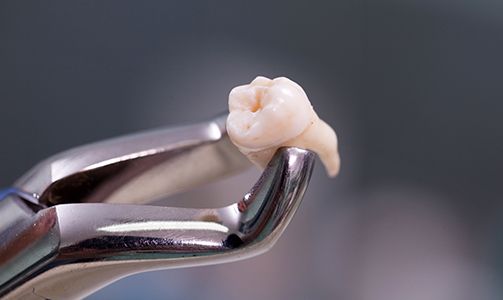
Even though it sounds serious and painful, tooth extractions are a very routine dental procedure. The first step is for Dr. Cline to take x-rays to see exactly where the tooth is, how it’s shaped and the depth and direction of the roots.
Depending on the type of extraction you need, Dr. Cline may need to cut open your gum to expose the tooth or cut the tooth into sections so it can be removed. Don’t worry – you’ll be completely numb and won’t feel any pain!
To get the tooth out, Dr. Cline use forceps and gently nudge the tooth out. After the extraction, he will place a gauze or pad in the hole and apply stitches. After about a week it will be time for a follow up appointment to make sure the patient has healed adequately.
Find Out If You Need a Tooth Removed

The only way to know for sure if you need to have teeth removed is to visit our dental office. Once you’ve been seen in our dental office, Dr. Cline will perform a thorough exam and evaluation to determine if a tooth extraction is necessary. Give us a call today to make an appointment.
Understanding the Cost of Tooth Extractions
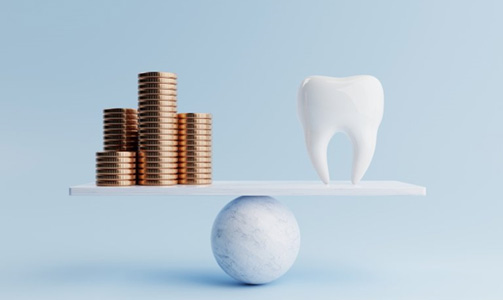
If your dentist has suggested that you require a tooth extraction to protect your smile, then you’ll want to know how much the procedure will cost before committing to anything. During your initial consultation, our team will thoroughly discuss your treatment plan as well as the financial aspect so that there aren’t any surprises when it comes time to pay. We can also walk you through the ways to maximize your dental insurance as well as how you can make the most of alternative financing. Keep reading to learn more about the cost of tooth extractions.
Factors That Can Affect Tooth Extraction Cost
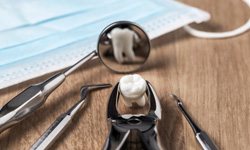
Remember that every smile is as unique as the patient, so many procedures will be priced depending on the specific situation. The only way to get a more accurate estimate of the cost of tooth extraction is by visiting our team so that we can examine your mouth and determine the proper treatment plan. Several factors that can influence the overall price may include:
- The kind of tooth: Needing a front tooth extracted will generally cost less compared to removing a rear molar because these teeth are bigger and have stronger roots.
- The number of teeth: Removing only one tooth is less expensive than taking out multiple.
- The overall complexity of the extraction: Regular tooth extractions will come with a lower price compared to extracting an impacted tooth or a wisdom tooth.
- The type of restoration used: After extracting a tooth or teeth, you’ll likely need to replace it/them with a dental crown, bridge, or dentures, which all come with their unique prices.
Does Dental Insurance Cover Tooth Extractions?

The good news is that most dental insurance companies will help cover about 50% of the total price of tooth extractions once you’ve met your deductible, including wisdom teeth. This is mostly because this procedure is considered a major restorative treatment. However, the exact percentage will vary based on each patient’s policy, so you’ll want to verify the details of your plan with your provider before starting treatment. You can also speak with our team and we’ll be happy to help with this process.
How to Make Tooth Extractions Affordable

If you aren’t currently covered by dental insurance, this doesn’t mean that you’ll be left completely on your own. Our team is proud to offer a few alternative options for minimizing your expenses when it comes to paying for a tooth extraction. Firstly, we have an in-house dental plan that can provide you with significant discounts on most treatments without you needing to worry about maximums or waiting periods. You can also consider signing up for CareCredit, which can help turn the total cost of your tooth extraction into monthly installments that come with little to no interest!
Tooth Extractions FAQs
What’s the Difference Between Tooth Extractions and Wisdom Tooth Surgery?
Regular tooth extractions and wisdom tooth surgery might appear similar at first, but there are a few key differences. For one, wisdom teeth extractions in Idaho Falls are specifically performed on the third molars that emerge in early adulthood, while a regular tooth extraction can be done on any tooth that is irreparably damaged or otherwise causing oral health issues. Another major difference is that wisdom teeth extractions often involve extra steps since the teeth are impacted, while normal tooth extractions rarely require more than a few pulls with a simple forceps.
How Should I Prepare for a Tooth Extraction?
Your guidelines on what to do before a tooth extraction will vary based on the complexity of your procedure as well as whether you’re receiving sedation. We’ll outline some instructions for you beforehand, but we also encourage you to ask any additional questions you may have, such as what you should eat before your procedure and what you should bring to the office. As a general rule, if you’re going to be sedated, you should arrange for a trusted friend or family member to drive you home afterward, for your own safety.
Can I Leave the Space Empty After a Tooth Extraction?
When a tooth toward the back of the mouth is removed, many patients try to save money by just leaving the space empty. However, with the exception of the wisdom teeth, every single tooth serves a purpose in your smile as a whole. Even if your missing tooth isn’t visible when you grin, not replacing it can lead to a host of oral health problems. For example, it could cause the rest of your teeth to drift out of alignment and create difficulties when chewing. That’s why, after you’ve finished healing, Dr. Cline recommends scheduling an appointment with him to discuss your options for replacing the extracted tooth.
Are There Risks Involved with Tooth Extraction?
When a tooth extraction is performed by a skilled dentist in Idaho Falls like Dr. Cline, you should have nothing to worry about. Of course, no dental procedure comes without an infinitesimal amount of risk. With tooth extractions, the largest concern is infection, which can occur if bacteria infiltrate the extraction site before you’ve finished recovering. Another risk is dry socket, which occurs when the blood clot forming over the site is dislodged and ultimately lengthens the healing process. To prevent these complications, it’s important that you carefully follow our aftercare instructions.
I Need a Checkup & Cleaning I am Looking for a Dentist for My Child I am Concerned About Bleeding Gums I Have a Cavity or Broken Tooth I am Missing One or More Teeth I am Unhappy with My Smile I Want a Straighter Smile I am Scared of the Dentist I am in Pain & Need Help I Need My Wisdom Teeth Removed View Our Services

